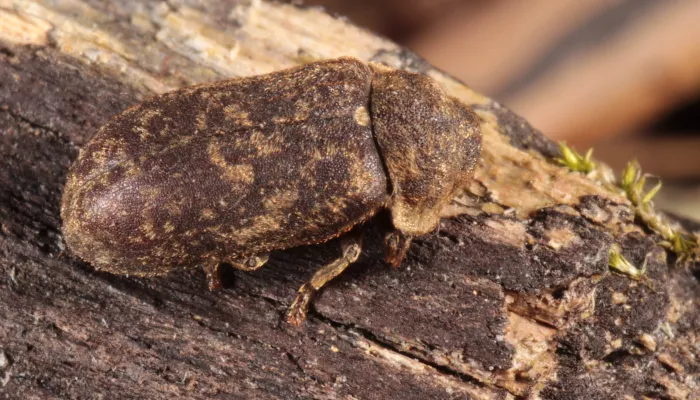| Statistics | |
|---|---|
| Length: | 5mm - 9mm |
Famed for its tapping in the middle of the night, supposedly heralding tragedy, the Deathwatch beetle is a serious wood-boring pest. In houses, their tunnelling can cause major damage.
About
The Deathwatch beetle is a medium-sized beetle. The larvae live in dead wood, in old trees and in buildings: their tunnelling can cause major damage to wood beams and floors, and to wooden furniture. Adults emerge during the spring, leaving holes of about 4mm across in the wood. The adults make tapping noises against the dead wood to attract mates; the females then lay their eggs in crevices in the wood.
How to identify
The adult Deathwatch beetle is a cylindrical beetle, with a head that is mostly hidden underneath the thorax. It is brown and covered with tiny hairs.
Did you know?
The tapping of the adult Deathwatch beetle is traditionally meant to be bad luck, heralding tragedy in a household. It could often be heard in the quiet of the night, and was thought to be a countdown to death as rhythmic as the ticking of a watch.
How people can help
The Wildlife Trusts work with pest controllers to find the most wildlife-friendly solutions to some of our everyday problems.

